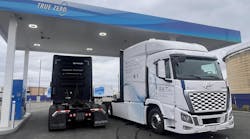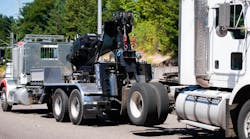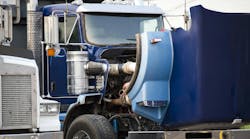Businesses are starting to hear the benefit message of speech recognition technology -- loud and clear
What's the first thing you'd think of if someone mentioned talking to a computer?
2001: A Space Odyssey, right? It's horrifying Hal, the space station computer with the even-toned, emotionless voice that drones in most memories. Since the 1968 publication of Arthur Clarke's science fiction novel, Hal has been the dreaded voice of the computerized future, as cold and remote as space itself.
So brace yourself for this news: Hal has taken a day job in the trucking industry. What's more, computerized speech recognition may be a technology tailor-made for trucking. (And Hal's big chance to become respectable at last.)
Squarerigger Corp. is one of the industry's pioneers in the use of speech recognition technology. According to Ed Cooper, CEO, the company plans to offer voice recognition as an option with its Vehicle Tracker for Windows fleet maintenance system, beginning as early as the fourth quarter of the year. Vehicle Tracker provides tracking and analysis for maintenance-related functions, such as work orders, fuel, parts inventory, labor, preventive maintenance, and tire tracking. Shell Fleet Services will be marketing the Windows-based system along with its fueling and maintenance offerings.
"We plan to give users the option of typing in a request in English or turning on the voice recognition function and speaking that request into a microphone," Cooper explains.
English Wizard software by Linguistic Technology Corp., which is invisibly embedded in the current system, allows a technician to type a request for information into a text box on the screen. For example, "Show me all the vehicles that had clutch replacements done last year." With the voice recognition option, the technician could choose to simply say the same request into the microphone. The voice recognition program converts the voice input to text, the English Wizard converts the text to an SQL request, which queries the database and comes back with the appropriate information.
"Fleet people have already found other applications," Cooper adds, "such as having the computer say as well as display short answers. For instance, if a technician asks, `How many gallons of fuel did vehicle number 235 use in July?' The computer can display a text answer and say, `Vehicle 235 used 80 gallons.'
"What we see long term is a shop where technicians wear small lapel microphones and just ask for the information they need -- a schematic, diagram, part number, etc. -- which is then retrieved from in-housedatabases or from OEMs via the Internet and displayed on large screens that are easily viewed from the service bays. Technicians could also ask that the information be printed by saying, `Print that.' Voice-activated computer commands are already rather common."
Not bad, but how does it do that? Continuous-speech recognition programs such as Dragon Systems' Naturally Speaking Preferred or IBM's ViaVoice Gold (which allow the speaker to talk normally without pausing between every word) have a built-in vocabulary of known words. Naturally Speaking Deluxe has a vocabulary of 60,000 words, for example.
Users can also create their own application-specific lexicons, adding words such as proper names or technical terminology. To get a new voice recognition system up and running, a user typically spends time reading a predesigned text to the computer to "teach" it how they articulate words and phrases. After that, the computer `learns' as it goes along, adding new words and correcting any misunderstandings.
It's exciting to think of all the possible uses for voice recognition technology in trucking. Besides shop applications, what about drivers having hands-free activation of systems like HV/AC in the truck cab and sleeper? Or field salespeople telephoning to tell their computers to send the faxes they forgot about when they left the office?
Suddenly "talking shop" takes on a whole new connotation.


